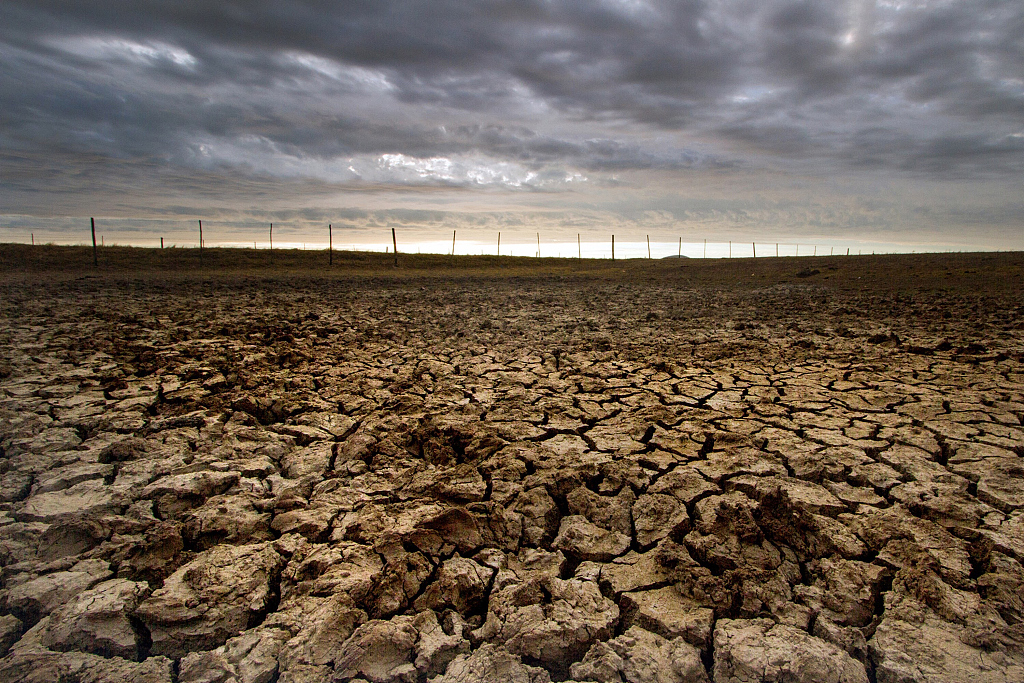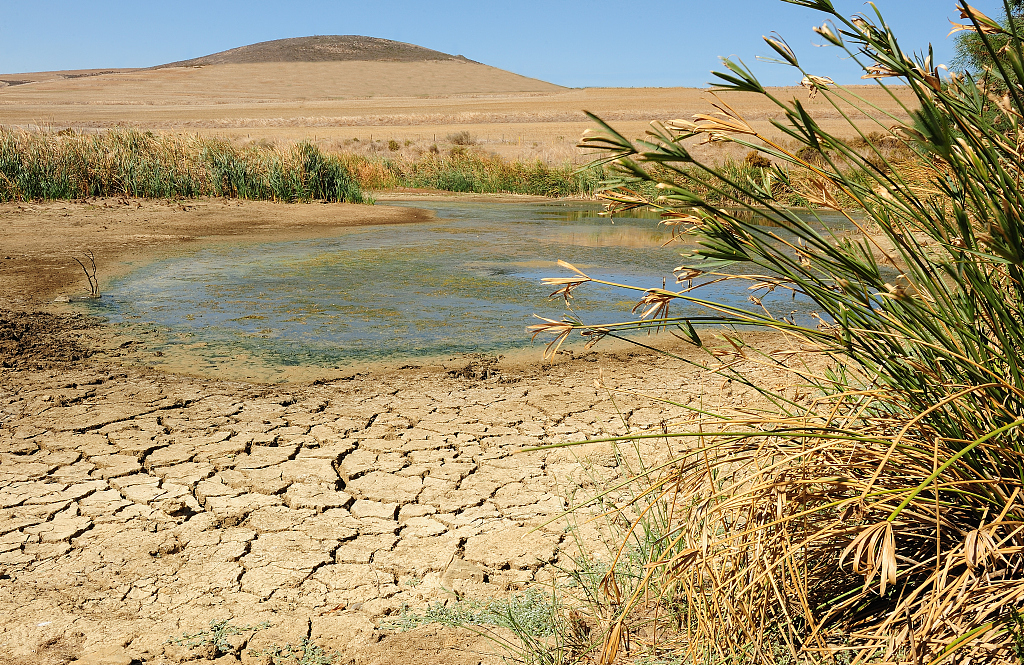South African farmer Steve Bothma heaved a sigh of relief when the weatherman finally predicted rain.
His excitement was short-lived. Just a few days later, the forecast changed. It was back to cloudless sunshine.
In South Africa's Eastern Cape province, no one can remember the last proper downpour. Some say it was five years ago, others six.
"This is a disaster," said Bothma, 51, who in his three decades working the land has never seen such dry weather.
"Older people who are 70 or 80 years old would tell you exactly the same thing," he added.

South Africa is facing a drought. /VCG Photo
South Africa is facing a drought. /VCG Photo
Southern Africa is grappling with one of the worst droughts in decades – the outcome of years of absent or erratic rainfall, and temperatures that have reached record highs.
Millions are facing hunger due to poor harvests and dwindling livestock.
"It is usually beautifully green at this time of the year," said Bothma, as a hot gust of wind swept through his sheep pen.
"But now even the pine trees are dying."
South Africa is one of the world's driest countries at the best of times.
Rapid urbanization and growing water consumption have placed a strain on water reserves and caused the coastal city of Cape Town to almost run dry in 2018.
But the ongoing drought has compounded the situation.
Dam levels dropped dangerously low in October, prompting President Cyril Ramaphosa to call for "drastic measures."
South Africa is in "a dire situation," said Ramaphosa in October, highlighting that five out of nine provinces were badly hit.

South Africa is one of the world's driest countries at the best of times. /VCG Photo
South Africa is one of the world's driest countries at the best of times. /VCG Photo
To the slaughterhouse
Bothma has had to cull around 60 percent of his merino sheep, including lambs.
Because of the drought, he could only afford to keep 2,000 as "breeding stock."
"Usually I keep them until they are five or six years old," Bothma explained, as his staff selected animals for the next trip to the slaughterhouse.
The price he gets for his merino wool has plunged by around 40 percent over the past year due to the drought and a foot-and-mouth disease outbreak in the north of the country.
"The wool is full of dust and not very strong," said Bothma.
Years of dry weather have left scars in the landscape.
Arid fields flanked the windy gravel road leading to the nearest town of Adelaide, tucked at the bottom of a mountain range.
Cows chewed pieces of wood and sheep ambled in search of food.
In town, livestock roamed the streets and nibbled at scorched grass on the golf course.
The nearest dam dried up at the start of the year.
No water to wash
Some of Adelaide's 15,000 inhabitants had been without running water for seven months.
A South African aid group, Gift of the Givers, has been helping by delivering water to the area since April.
On a recent water mission, hundreds of people In the township of Bezuidenhoutville rushed up with an array of empty bottles, buckets, iceboxes and even paint cans.
"We are keeping it for food and drink," said Rodney Douglas, 59, pushing a wheelbarrow piled high with plastic jerrycans.
Assanda Sais, 38, complained that she could only spare enough water to bathe once a week and that her house was "smelling."
"We keep dirty water to flush," she explained.
Bezuidenhoutville's local middle school has had to shorten its week by half a day due to the lack of water.
Many children were missing class altogether.
"Kids have to help parents to carry water," said teacher Zeenat Gangat, sweltering as the sun beat down on the container walls of a classroom.
"They can't wash," she added. "They complain about stomach issues."
Poor infrastructure
Local authorities have tried to ease the situation by connecting sections of the town to a reservoir fed by Fish River, around 50 kilometers (30 miles) away.
The water is allocated on a rotational basis, but even then the pipeline to the river is way too narrow.
Adelaide deputy mayor Bornboy Ndyebi said the town's pipelines were in poor shape, and Thandekile Mnyimba, who heads the regional district of Amathole, told AFP that water trucks supplied by the government had broken down.
South Africa's main opposition, the Democratic Alliance (DA), has accused the ruling party of acting too late.
"It is only when the dam reached a very low level – around 4 percent – that they woke up," said DA councillor Ernie Lombard.

Southern Africa is grappling with one of the worst droughts in decades. /VCG Photo
Southern Africa is grappling with one of the worst droughts in decades. /VCG Photo
'Can't sleep at night'
Water insecurity could become "the biggest developmental and economic challenge facing this country," Ramaphosa added.
Adelaide is already suffering from South Africa's ailing economy, marked by low growth and chronic unemployment.
Close to 70 percent of the small town's inhabitants are out of work. When houses go up for sale, they stay on the market.
The manager of Adelaide's only hotel said she was worried if too many rooms were booked at the same time, as "it takes two weeks to do the washing."
On nearby farms, high-yielding avocado trees now barely produce 10, low-grade fruit instead of 50.
Helpless farmers watch their animals succumb to thirst and hunger. Alton Snaer has lost nine of his 15 cows.
"I can't sleep at night," said the retired farmer.
Bothma feared that more months without rain would force him "to close the books."
"Farmers are taking their life," he said, eyes reddened by the dust.
(All photos are from VCG and edited by Ding Qian)
(If you want to contribute and have specific expertise, please contact us at nature@cgtn.com.)
Source(s): AFP